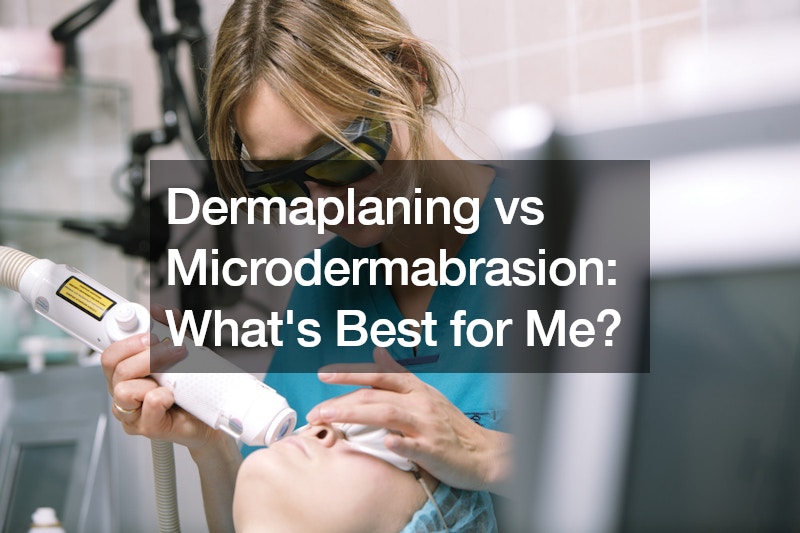
Dermaplaning and microdermabrasion are two popular skincare treatments that offer distinct benefits for improving skin texture and appearance. Here’s what you need to know about dermaplaning vs microdermabrasion.
Dermaplaning
Dermaplaning is a non-invasive cosmetic procedure that involves using a sterile surgical scalpel to gently scrape the surface of the skin. This process removes dead skin cells and fine vellus hair, commonly known as peach fuzz, leaving the skin smooth and vibrant. The procedure is typically performed by a trained skincare professional or dermatologist.
One of the primary benefits of dermaplaning is its ability to exfoliate the skin deeply. By removing the outer layer of dead skin cells, dermaplaning reveals a brighter complexion and can improve the absorption of skincare products. This makes it an effective treatment for addressing dullness, dryness, and uneven skin tone.
Dermaplaning is also well-tolerated by most skin types, including sensitive skin, as it does not involve the use of harsh chemicals or abrasive particles. It is a quick procedure with minimal discomfort and downtime, making it convenient for individuals with busy lifestyles.
Microdermabrasion
Microdermabrasion is another non-invasive exfoliating treatment that aims to improve skin texture and appearance. Unlike dermaplaning, which uses a scalpel, microdermabrasion employs a handheld device that sprays tiny crystals onto the skin while simultaneously vacuuming them away. This process exfoliates the skin more gently than dermaplaning but still effectively removes dead skin cells and stimulates collagen production.
One of the key advantages of microdermabrasion is its versatility. It can be customized to treat different skin concerns, including fine lines, mild acne scars, sun damage, and uneven pigmentation. The procedure is generally safe for all skin types and colors, although individuals with more sensitive skin may experience slight redness or irritation immediately after treatment.
Microdermabrasion sessions typically take about 30 to 60 minutes, depending on the areas treated and the severity of the skin issues. While multiple sessions are often recommended for optimal results, improvements in skin texture and appearance are noticeable after just one treatment.

Choosing the Right Treatment
When it comes down to dermaplaning vs microdermabrasion, consider your specific skin concerns, tolerance for downtime, and desired results. If you are looking for a deep exfoliation with the removal of peach fuzz, dermaplaning might be the better choice. On the other hand, if you seek a versatile treatment that addresses a variety of skin issues with minimal discomfort, microdermabrasion could be more suitable. Consulting with a skincare professional or dermatologist is crucial!.







